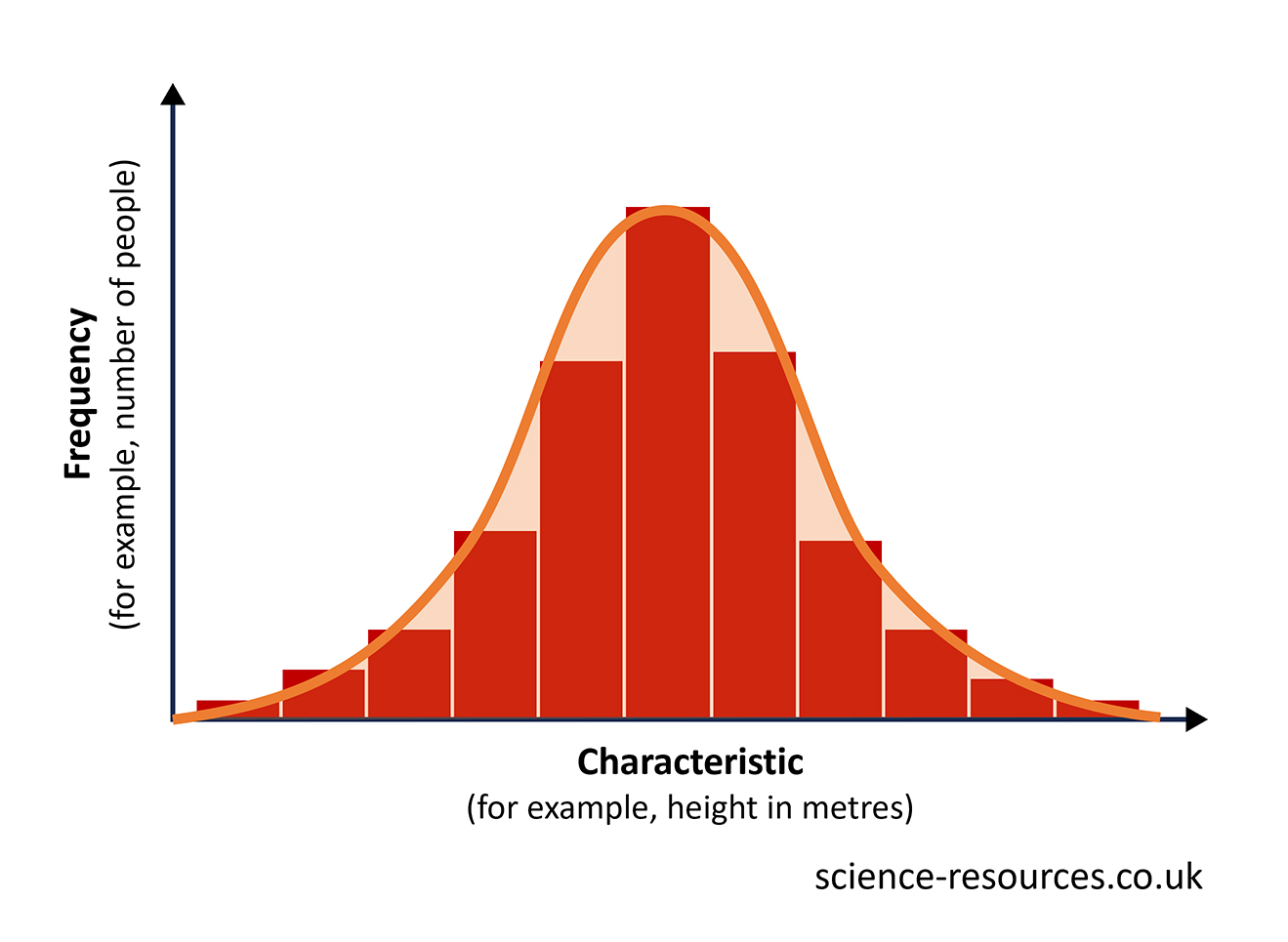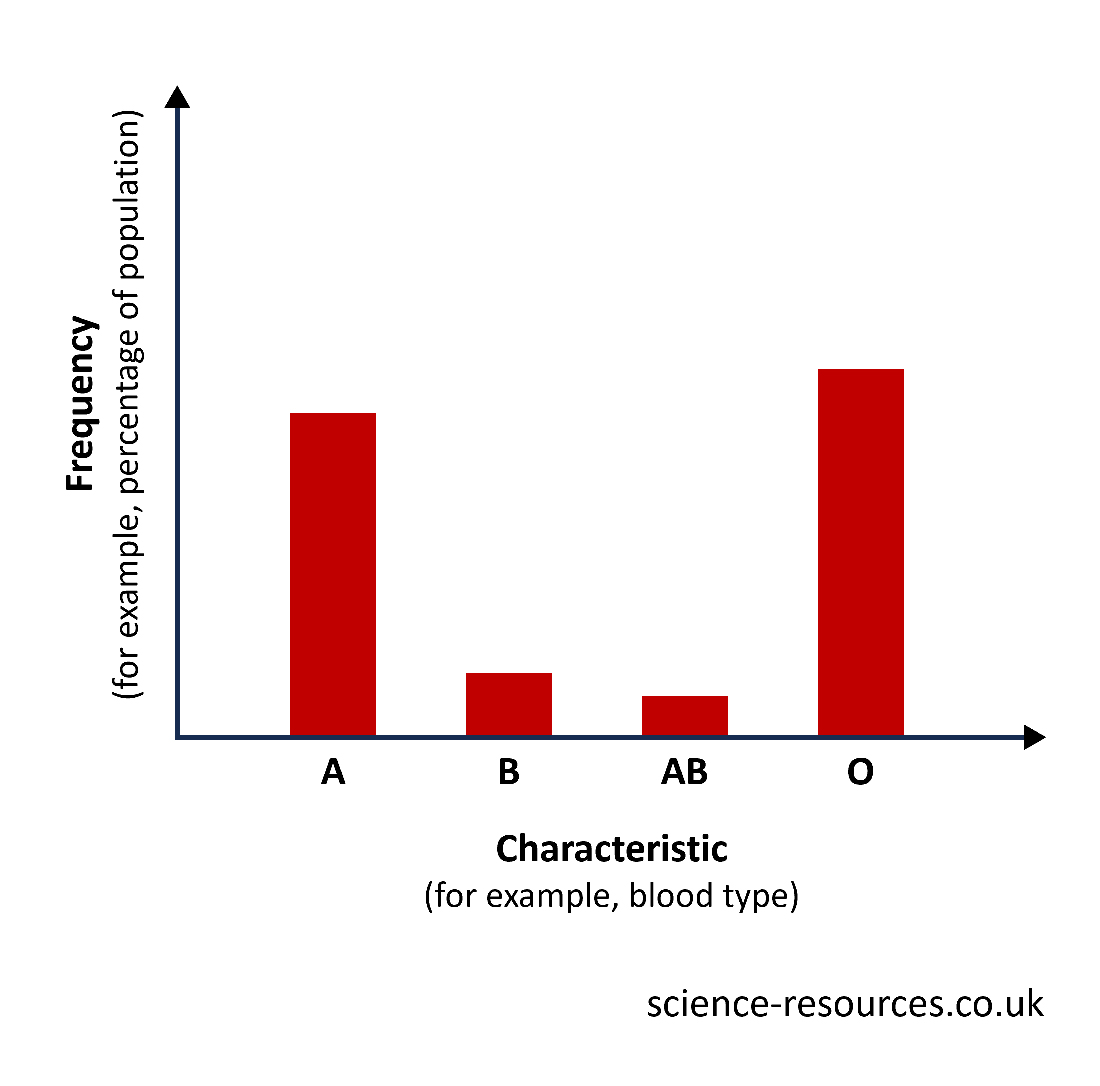Continuous and discontinuous variation
Variation Continuous Variation We can show the results of surveys of continuous variation in line graphs or bar charts with a line that shows the trend. If you measure the heights of a group of people and make a graph of your results, it usually looks like this: This graph shows a smooth bell-shaped curve of normal distribution.
Individuals within a single species have different characteristics. This is called variation. We can classify variation into two types:
Continuous variation refers to a characteristic that can have many different values and take on any value within that range. An example of this is human height. For example, human height is a continuous variation. It can be any value from the shortest person in the world to the tallest person in the world. There is no gap between these values, so this is continuous variation. For example, you can be 1.7m tall, 1.72m tall, or any height in between - if you have a very precise ruler.
Therefore, a characteristic that changes gradually over a range of values is a continuous variation (known as quantitative variation).
Some other examples of continuous variation are:

Note: The more data you collect and the more categories you use, the closer your results will be to the bell curve and a normal distribution.
Discontinuous Variation When we make a graph of discontinuous variation, the data is called discrete or categorical data. For example, this is a graph of human blood types: Bar chart showing the frequency of each blood group in the population.
Discontinuous variation means that a characteristic within a population can only have a few possible values, or categories. Individuals can only fit into one category. These characteristics are usually determined by one gene or a few genes, and are not affected much by the environment.
Blood type in humans is an example of discontinuous variation. There are only four categories (A, B, AB or O), and humans can only have one of these blood types.
Some other examples of discontinuous variation are:

Summary: